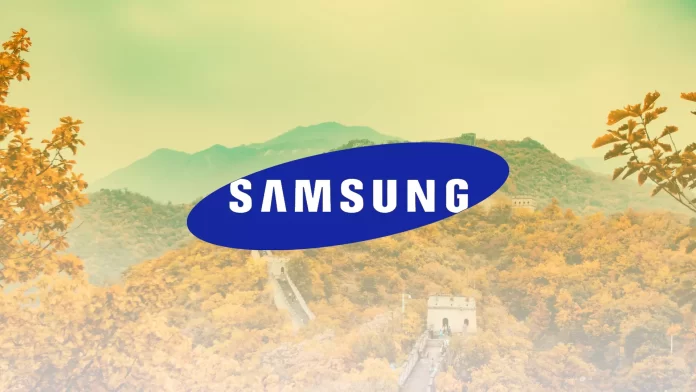China is one of the most promising and attractive markets for many companies. There are two reasons for this. First, it has a vast population of more than 1.4 billion people. The second is the constantly growing income of the Chinese population, which makes Chinese customers more and more solvent.
However, Samsung is losing the Chinese smartphone market, which was one of the company’s key markets, with Samsung’s market share in China at 18.7% in 2013, dropping to 12.1% by 2014.
In 2018, Samsung’s share dipped below 1 percent to about 0.8 percent, and in 2021, Samsung’s share remained around 0.6 percent.
Moreover, in 2019, Samsung ceased production in China, moving plants to Vietnam and other countries.
Why does this matter?
The drop in Samsung’s market share in the Chinese market was rapid. I would even say it was too fast. From 18-20% by various estimates in 2013-2014 to almost zero in 2021.
But whether we want to admit it or not, China is a very important market. There are about 1.2 billion people in that market, 83% of China’s population.
State-owned companies are pushing 5G in this market, the fastest-growing market in the world.
More importantly, it’s not just a fast-growing and large market but a reasonably mature market with its market leaders.
For many Western corporations, China is one of the key markets. For example, Apple is making significant efforts to retain this market because it is the second most important market for the company after the United States.
That is why Tim Cook often visits China, demonstrating the importance of this market for companies.
Of course, we must consider the specificity and complexity of the Chinese market, e.g., user data (for example, the Apple Privacy policy doesn’t work de facto in China).
However, the example of Samsung demonstrates that a series of bad decisions can lead to the loss of this market in just 5 years.
The brief history of Samsung in China
Samsung opened its factory in 1992 and has worked to expand its presence in China. It was initially successful, controlling between 15 and 20 percent of the market share in 2013.
It was a real success because China was one of the leading markets for Samsung. And then something went wrong.
The chart below shows the number of Samsung smartphone manufacturing plants (or associated with Samsung) in China in 2015-2021. As you may see, the number of factories has tanked since 2015 from 6 to 0 in 2020, when Samsung closed its last smartphone manufacturing plant in Huizhou.
If we turn to history, initially, everything is fine. When Samsung first entered the Chinese market (which was the early 90s), the middle class was just emerging in the country.
As a result, by the end of the 90s, the Chinese market had become one of Samsung’s key markets. The median income of the Chinese population was growing, and the demand for Samsung products, mainly in the middle segment, was growing in line with income.
At that time, Samsung was associated primarily with affluence and belonging to the middle class. Moreover, in the 2000s, this trend continued, and Samsung was considered an excellent choice to show its wealth.
When the smartphone market began to explode in the 2010s, Samsung took the lead, about 20% of the market. Everything seemed cloudless, but already in 2013-2014, the market began to falter due to the growth of Apple’s market share (which in China is primarily associated with luxury), as well as Xiaomi, Oppo, Vivo, and Huawei. The Chinese brands take just a couple of years to squeeze out Samsung from the Chinese market.
Reasons for Samsung’s problems in China
Samsung went down because of marketing mistakes, miscalculations, and a lack of cultural awareness.
Here are some short reasons:
- Samsung has failed to build its ecosystem in China. The company relied on Android and its Play Store, but since Google is banned in China, Samsung had no eco-system to offer to Chinese customers.
- In 2017, Samsung refused to recall Samsung Galaxy Note 7 in China following the worldwide issue with exploding batteries. Therefore, the company has ruined its reputation in China.
- Instead of investing in the Chinese market in 2016-2018, Samsung decided to cut its costs by ceasing Chinese-based factories.
- Samsung wasn’t following social trends in China. China has a specific culture, especially in small cities and rural areas. For example, local companies followed social trends by adding camera filters (like big eyes or orange skin). However, with almost all Korean executive staff in China living in Tier-1 cities on the East coast, Samsung failed to understand this trend.
For any other location, that wouldn’t be so crucial, but the Chinese market is quite specific in aspects that aren’t clear for Americans, Europeans, or Koreans.
Competition in the Chinese market
Local brands such as Xiaomi, Huawei, Oppo and Vivo (BBK Electronics) had unique strategies. Each company had its approach.
Xiaomi, relying on an online presence
If you remember, at the first stage, the company abandoned advertising and physical presence and actively sold cheap smartphones online. In any other country in the world, this wouldn’t have shot out, but not in China, where the population is already constantly sitting in a messenger and used to buy and pay over the Internet. Simple and cheap smartphones without overpaying for the brand.
Oppo and Vivo, aiming at small towns
Oppo and Vivo went the other way, expanding into rural areas and small towns. This was in line with the market picture in China, where most of the territory in the west is small towns where there are no big retailers. BBK Electronics started working with small distributors, even small corner stores.
Xiaomi and Huawei
These two companies have focused on the high-end market, offering big stores in big cities and building their ecosystem around their unique apps and services.





